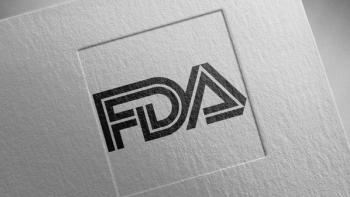
EASD: Early Initiation of Insulin Improves Glucose Control in Type 2 Diabetes
AMSTERDAM -- Adding insulin to oral antidiabetic agents early in the course of disease can help patients achieve better glucose control, but many patients will need a combined insulin regimen, investigators reported.
AMSTERDAM, Sept. 21 -- Adding insulin to oral antidiabetic agents early in the course of disease can help patients achieve better glucose control, but many patients will need a combined insulin regimen, investigators reported.
"We've seen that the addition of a single analog insulin formulation to dual therapy with metformin and sulfonylurea can lower A1c [glycosylated hemoblogin A1c] by between 0.8 and 1.4%, and sustain that reduction for over a year," said Rury Holman, M.D., of Oxford University and principal investigator of the 4-T study.
Regimens using biphasic insulin or insulin aspart (prandial insulin) gave patients better control than insulin detemir (basal insulin), but these regimens were also associated with a greater incidence of adverse events, Dr. Holman told attendees at the meeting of the European Association for the Study of Diabetes here.
Interim results of the 4-T (Treating to Target in Type 2 Diabetes) trial were also published in an early online release from the Oct. 25 issue of the New England Journal of Medicine.
"Because of the numbers of patients coming forward now with diabetes, insulin therapy is going to be started more and more in a primary care setting," Dr. Holman said. "And yet, despite all of this, we don't really have an evidence base on how best to initiate insulin therapy."
The 4-T trial was designed to answer two key questions: which insulin should patients with type 2 diabetes poorly controlled on oral agents alone be started on, and when should insulin therapy be initiated?
The trial examined the relative benefits and risks of three different insulin formulations taken in addition to oral antidiabetic agents.
A total of 708 patients in 58 centers in the United Kingdom were randomized in an open label fashion to one of three regimens:
- Biphasic insulin aspart 30 (NovoMix 30) twice a day
- Insulin aspart (NovoRapid) three times a day with meals
- Insulin detemir (Levemir) daily
For the first year of the trial, patients were maintained on a single insulin formulation unless they developed unacceptable hyperglycemia, which was defined as any HbA1c reading of 10% or more, or two consecutive readings of 8% or more at or after 24 weeks.
The goal was to achieve an HbA1c of 6.5% or less, a more aggressive target than the American Diabetes Association standard of less than 7%.
Dr. Holman and colleagues reported the one-year data from the trial at the meeting.
At one year, the mean HbA1c levels among patients in the biphasic insulin group were similar to those of patients in the prandial (aspart) group, at 7.3% and 7.2%, respectively (P=0.08).
Patients who received only the basal insulin, however, had significantly higher HbA1c levels compared with the other two groups at 7.6%, (P
Unacceptable hyperglycemia requiring addition of a second insulin formulation occurred in 9% of patients on biphasic insulin, 4% of those on insulin aspart, and 18% of patients on basal insulin.
Patients on biphasic insulin gained an average of 4.7 kg, while those on the aspart regimen gained 5.7 kg, and those on basal insulin gained 1.9 kg. Rates of adverse events were similar among the three groups.
In an editorial accompanying the published study in the New England Journal of Medicine, Graham T. McMahon, M.D., M.M.Sc., and Robert G. Dluhy, M.D., both of Harvard and Brigham & Women's Hospital in Boston, commented that the rates of glycemic control achieved thus far in 4-T were relatively low compared with other published trials of insulin initiation.
"It is possible that part of the failure to reach the goal was that the algorithm was insufficiently proactive or was insufficiently implemented, possibly resulting from the diversity of the 58 centers," they wrote. "The investigators did not appear to have a standardized approach to educating and supporting the patients and helping them maintain behavioral changes."
"Another possibility," they continued, "is that the rate of hypoglycemia in patients receiving prandial and biphasic insulins (with a respective median of eight and four symptomatic hypoglycemic events per patient per year with a glucose level of < 56 mg per deciliter) constrained attempts to advance the insulin dose."
The editorialists also stated that continuing patients on suflonylureas after the addition of insulin exposes patients to additional risk of hypoglycemia without added therapeutic benefit.
The "disappointing" results seen with basal insulin in the 4-T study may be the result of the choice of formulation used, the editorialists contended, noting that insulin detemir has a dose-dependent half life that is shorter than that of insulin glargine (Lantus), another long-acting insulin. The shorter half-life of detemir may mean that some patients on the basal regimen don't get adequate insulin exposure, they said.
On the other hand, the safety of the detemir regimen, with the lowest occurrence of hypoglycemic episodes, was reassuring, they added.
"The 4-T study provides a clear indication that prandial and biphasic insulin formulations are suboptimal choices for insulin initiation and probably expose patients to an unnecessarily high risk of hypoglycemia without clinically important benefit," they wrote.
"The second phase of the study should help to define the best next step for patients who do not reach their glucose target while receiving basal insulin alone, since these patients are most likely to benefit from additional prandial insulin," they concluded.
Newsletter
Enhance your clinical practice with the Patient Care newsletter, offering the latest evidence-based guidelines, diagnostic insights, and treatment strategies for primary care physicians.



















































































































































































































































































